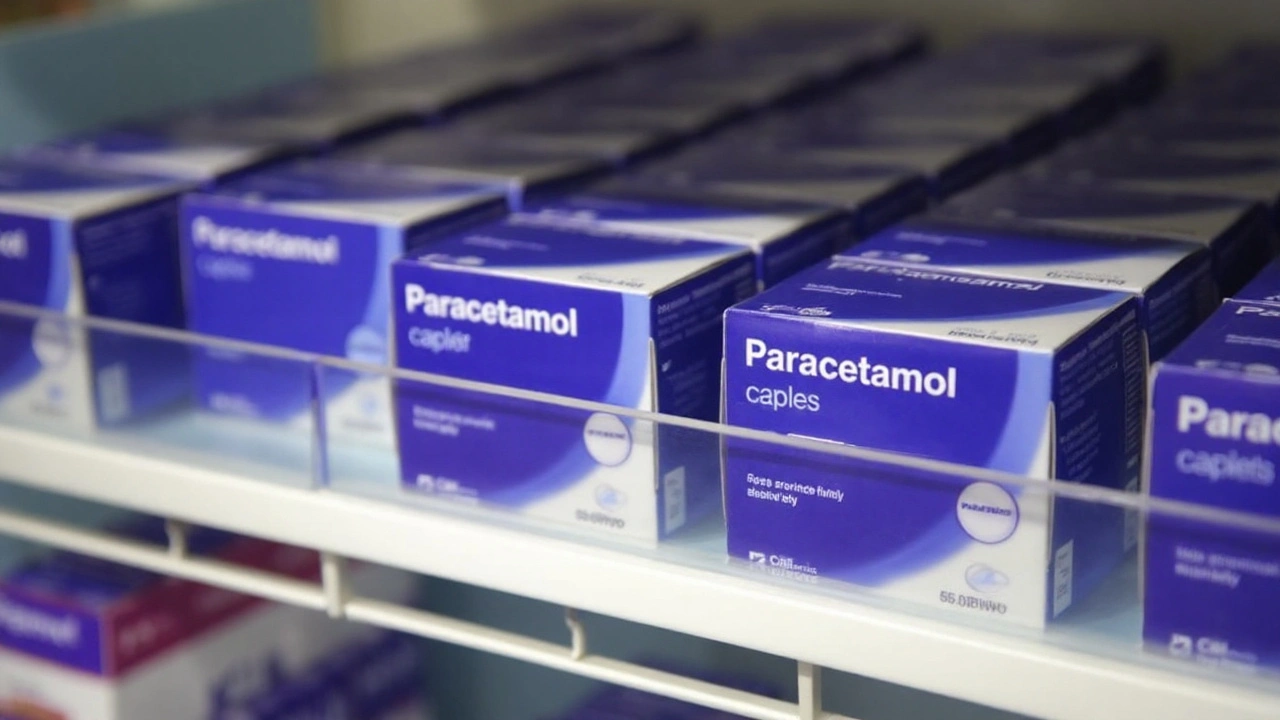Acetaminophen – What You Need to Know
When working with acetaminophen, a widely available over‑the‑counter pain reliever and fever reducer. Also known as paracetamol, it helps ease headaches, muscle aches, colds and chills. Most people grab a bottle at the pharmacy without thinking twice, but understanding how it works makes the difference between relief and risk.
Acetaminophen belongs to the broad class of OTC medication, products you can buy without a prescription. That convenience drives its global popularity, yet the same ease can hide potential pitfalls. The drug works by blocking a specific enzyme in the brain that signals pain and fever, a mechanism distinct from NSAIDs that target inflammation. Because it doesn’t reduce swelling, acetaminophen is often paired with other drugs when inflammation is a factor.
Proper dosage is the cornerstone of safe use. For adults, the standard dose is 500 mg to 1000 mg every 4‑6 hours, never exceeding 4000 mg in a 24‑hour period. Children follow weight‑based guidelines, usually 10‑15 mg per kilogram of body weight per dose. These numbers sound simple, but the real world adds complexity: combination cold‑and‑flu products often hide extra acetaminophen, and a single mis‑step can push you over the safe limit.
One of the most critical safety topics is liver toxicity, damage that occurs when the liver processes too much acetaminophen. The liver metabolizes the drug, and an overload creates a poisonous by‑product that can lead to acute liver failure. Risk spikes with chronic alcohol use, pre‑existing liver disease, or taking other acetaminophen‑containing products simultaneously. Symptoms of toxicity—nausea, abdominal pain, jaundice—often appear after the damage has started, so prevention via correct dosing is essential.
Beyond dosage, drug interactions shape how safely you can use acetamineophen. Anticoagulants like warfarin may have their effect heightened, while certain anticonvulsants can speed up its metabolism, nudging you toward toxicity faster. Always check labels and, when in doubt, ask a pharmacist or doctor. Knowing which substances amplify risk helps you avoid accidental overdoses.
Regulatory bodies worldwide set limits to protect public health. The World Health Organization lists acetaminophen on its Essential Medicines List, emphasizing its value when used appropriately. Meanwhile, agencies such as the US FDA and South Africa’s Medicines Control Council enforce packaging warnings and maximum package sizes to curb accidental overdose, especially among children.
When you need fast, reliable relief from a pounding headache or a stubborn fever, acetaminophen is often the first choice because it’s gentle on the stomach and doesn’t interfere with blood clotting. However, for inflammatory conditions like arthritis, you’ll likely reach for an NSAID or a steroid instead, as acetaminophen won’t address the swelling.
Key Takeaways for Safe Use
Remember these three rules: stick to the recommended dose, watch for hidden acetaminophen in combination products, and consider your liver health before you pop a pill. By treating acetaminophen as a helpful tool rather than an endless free pass, you keep the benefits while sidestepping the hazards.
Below you’ll find a curated mix of news pieces, health updates, and practical tips that touch on acetaminophen’s role in everyday life, recent regulatory moves, and real‑world stories about safe or unsafe use. Dive in to see how this simple tablet fits into larger health conversations across Africa and beyond.
Trump's Tylenol Claim Sparks Health Expert Backlash Over Autism Link
President Trump suggested that the common painkiller acetaminophen, known as Tylenol, is a major factor in autism, prompting a White House briefing on a pending announcement. Researchers and autism advocates quickly refuted the claim, pointing to a lack of solid evidence. Leading experts stressed that any observed associations are tiny and inconclusive. Health officials warned the statement could confuse pregnant people who rely on the drug safely.
View More





